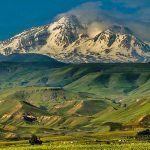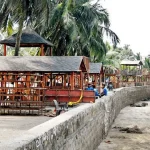Kuh-e-Sabalan, the dormant stratovolcano soaring majestically in the Ardabil Province of northwestern Iran, has long been a magnet for adventurers and mountaineers seeking to conquer its lofty heights. The history of climbing this iconic peak is a testament to human resilience, fortitude, and a deep-seated reverence for the natural world.
The saga of mountaineering on Kuh-e-Sabalan can be traced back to ancient times, with local tribes and communities forging a deep connection with the mountain. However, it wasn’t until the 20th century that the mountain began to attract the attention of modern-day climbers and explorers from around the globe.
In 1934, the first recorded ascent of Kuh-e-Sabalan was accomplished by a team of German and Austrian mountaineers, marking a pivotal moment in the annals of mountaineering history. Since then, Kuh-e-Sabalan has beckoned to adventurers, drawing them to brave the rugged terrain and unpredictable weather conditions in pursuit of conquering its summit.
Clothing for Climbing/Hiking Kuh-e-Sabalan
Preparation is paramount when venturing into the untamed wilderness of Kuh-e-Sabalan, and selecting the appropriate clothing is crucial to ensure a safe and comfortable ascent. The dynamic and changeable weather patterns in the region demand a versatile and layered approach to dressing.
For the lower elevations and milder temperatures, lightweight and breathable clothing is recommended, coupled with sturdy hiking boots to navigate the rocky trails. As the ascent progresses and the climate becomes more challenging, it is essential to layer up with insulating garments, such as fleece jackets and waterproof shells, to shield against the biting winds and potential precipitation.
Protection from the sun’s intense rays is also vital at higher altitudes, necessitating the use of sun hats, sunglasses, and sunscreen. Additionally, high-quality thermal undergarments, moisture-wicking socks, and gloves are indispensable items to combat the cold and maintain optimal body temperature.
Health and Fitness for Conquering Kuh-e-Sabalan
Embarking on the arduous journey to summit Kuh-e-Sabalan demands a solid foundation of physical fitness and mental fortitude. Prior to setting foot on the mountain, climbers are encouraged to engage in a comprehensive training regimen that encompasses cardiovascular exercises, strength training, and endurance-building activities.
A focus on core strength, flexibility, and muscular endurance is essential for navigating the challenging terrain and withstanding the physical demands of the ascent. Training at higher altitudes or incorporating high-intensity interval training (HIIT) can also help acclimatize the body to the reduced oxygen levels encountered at elevation.
Mental preparation is equally crucial, as climbers must cultivate resilience, determination, and an unwavering commitment to their goal. Visualization, meditation, and mindfulness practices can aid in sharpening mental focus and fostering a positive mindset for the rigors of the climb.
Both physical fitness and mental fortitude are required for Island Peak climb, Lobuche climb, Mera Peak, Everest climb, K2 climb, Ama Dablam climb and many more peaks.
Hydration and Nutrition Strategies for Kuh-e-Sabalan
During the climb, access to clean water sources may be limited, making it imperative for climbers to carry a reliable hydration system, such as a hydration bladder or durable water bottles. Electrolyte-replenishing drinks can also aid in offsetting the electrolyte imbalances caused by strenuous exertion and altitude-related fluid shifts.
Nutritionally dense and easily digestible foods form the bedrock of sustenance for climbers on Kuh-e-Sabalan. Complex carbohydrates, lean proteins, and healthy fats should comprise the bulk of their diet, providing the sustained energy and endurance needed for the prolonged physical activity at altitude.
Small, frequent meals and snacks help prevent the onset of fatigue, while trail mix, energy bars, and dried fruits serve as convenient and nourishing options for quick energy boosts. Additionally, supplementing with altitude-specific nutritional aids, such as iron and vitamin C, can support red blood cell production and immunity in the challenging high-altitude environment.
In conclusion, the compelling history of mountaineering on Kuh-e-Sabalan, the critical considerations for appropriate attire, the significance of health and fitness preparation, and the essential strategies for hydration and nutrition collectively contribute to the tapestry of knowledge and preparations that underpin a successful and fulfilling ascent of this wondrous peak. Aspiring climbers are encouraged to embrace these insights as they embark on their own remarkable journey to conquer Kuh-e-Sabalan.






